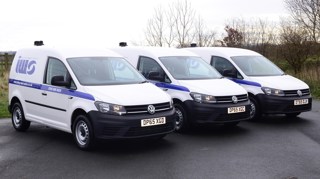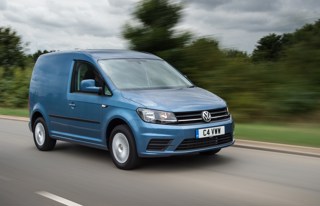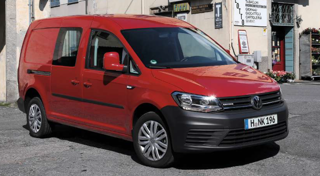Review
April 2018
After six months’ gruelling work at Commercial Fleet magazine, our long-term Volkswagen Caddy is finally going back to its owner for a well-earned rest.
Our Caddy, one of the new petrol variants just launched, was pushed into service as few previous long-termers have ever been and has given faithful service through rain, frost, snow and wind, lugging cargo about and keeping the various occupants safe with a dazzling array of safety features which would shame some upmarket cars.
As expected with a vehicle of German extraction, the van goes back with a clean sheet on the reliability front and a big fat zero as the maintenance cost.
We haven’t even had to add any oil or windscreen washer fluid during its time with us.
Regular readers will know that Volkswagen virtually wiped the board at the recent Commercial Fleet Awards, picking up gongs for Caddy, Transporter and Crafter.
And, as one of the awards judges, I had no hesitation in putting up my hand to vote for those models.
VW has consistently outperformed other marques from outside Germany over the years and the Caddy is a shining example of what a van should be – not exactly cheap, admittedly, but value for money and loaded with enough safety devices and features to keep any van driver happy.
Our van is the highest spec available and, therefore, has standard items that most fleet drivers won’t get. But, even at lower levels, the Caddy has a good range of kit. Most notable is the front assist and City Emergency Braking system, which is now standard across all VW vans. The system works up to 30mph and applies the brakes automatically if an imminent crash is detected.
It’s a fantastic piece of safety kit and one which helped Volkswagen to win all those prizes.
As stated in a previous road test report, the system was called into action once during our tenure with the Caddy, so we can assume that some major damage was avoided because of it.
Volkswagen launched this new model, plus a petrol-powered Transporter, in the face of the recent demonisation of diesel fuel, which has seen many green campaigners urging fleets to ditch heavy oil and go for something less polluting such as petrol in the case of vans as there are few electric and hybrid CVs currently available.
But the funny thing is that in the six months we have had the Caddy, the fickle pendulum of public opinion has again been on the move and certain people who know a thing or two about science are now asking whether diesel fuel really is all that bad after all.
While they fully accept that the sooty particles in diesel contribute to around 40,000 deaths per year in the UK alone, they also point out that petrol emits more CO2 than diesel – and as petrol car and van sales are rising, so greenhouse gas emissions in the UK are growing too.
So where does that leave the hapless van fleet operator who wishes to do their best for the planet? Between a rock and a hard place, I’d say.
While the public is the first to bang on about noxious emissions, consumers are also the first to complain when their parcel from Amazon wasn’t delivered (by van of course) or the plumber didn’t turn up (in a van) to repair their toilet.
Fleets have insufficient options when it comes to alternatives to diesel. More manufacturers need to follow the lead of Renault and Nissan by putting electric vans into the market.
Volkswagen will launch the eCrafter later this year – it’s undergoing trials now – but it needs to speed up the introduction of the technology across its van range to give fleets viable alternatives.
March 2018
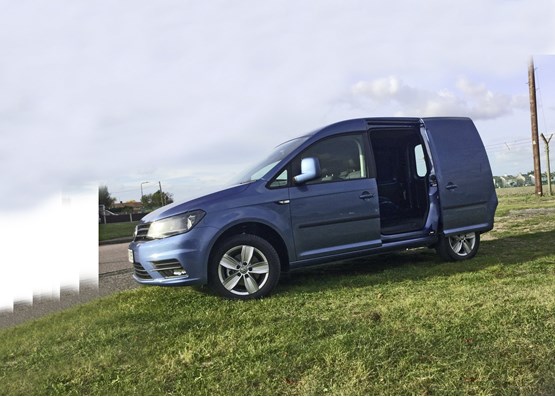
Despite dirty diesel concerns, Trevor Gehlcken would recomend the diesel counterpart to high mileage users.
I remember when van manufacturers switched from petrol to diesel engines back in the 1980s and early ’90s.
At the time, I had to get used to a completely new way of driving given diesel motors act differently compared with petrol ones.
Then it involved learning not to change down when overtaking and keeping the revs under 2,000rpm to extract maximum torque from the heavy oil powerplants.
Now with our long-term Volkswagen Caddy sporting a new petrol engine, I’m having to revert to the pre-diesel upsurge days, revving slightly higher to find the engine’s sweet spots and changing gear more frequently.
It is for this reason I have yet to mention fuel consumption for our test van, despite the fact that this is the sixth article written since taking it on.
Now fully conversant with our Caddy’s driving habits, I can reveal that my overall fuel consumption figure so far is 45.6mpg, a tad short of the claimed 48.7mpg but by no means disappointing owing to the fact that the official figures are calibrated on a rolling road with no loads on board, which means you don’t have much hope of replicating them in real life.
One of the reasons for this pleasing figure is that our Caddy has, along with a massive list of other standard equipment, a stop-start system installed as standard.
Most of my driving has been long distance stuff, so this device doesn’t really show its full potential, but I reckon that with more round-town driving, I could just about achieve that magic 48.7mpg.
It is claimed stop-start can save up to 15% in fuel when used exclusively for congested city driving.
Over the years, I have attended many driver training sessions to report for Commercial Fleet and its forerunner Fleet Van and the tricks I picked up along the way have really helped to keep fuel costs down.
I’d thoroughly recommend these sessions, even for drivers who think they know everything – believe me, they don’t!
As stated in the previous issue, our Caddy is a filthy mess at the moment both inside and out as it has been pressed into service time and again ferrying relations about across the country, lugging other people’s furniture around and travelling the six hours from my home to our holiday cottage on several occasions.
Despite cleaning the cab out regularly, I am constantly finding half-empty water bottles, old packets of crisps and other detritus tucked away in hidden corners.
One thing I have learned about vans of this size is that if you drop a small item such as a pen down the side of the seats, it is highly unlikely that you’ll ever see it again!
But the $64,000 question is: would we recommend this van over its diesel equivalent? The answer is: it depends on your expected total mileage in the van’s first fleet life.
For exclusively round-town usage we’d say a definite ‘yes’ as this vehicle is a real smoothie, it’s cheaper to buy than a diesel variant and runs on petrol which is also cheaper.
However, if travelling up and down the M6 for hundreds of miles on a regular basis is your fleet thing, then we’d have to opt for the sturdier diesel model, risking the ire of all the green campaigners who insist that diesel van owners are the ‘devil incarnate’.
February 2018
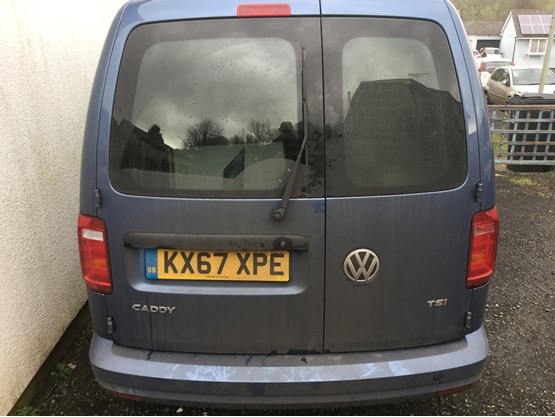
The Volkswagen Caddy's safety systems impressed Trevor Gehlcken when it prevented a potential collision.
The birth of my seventh grandchild has seen our long-term Volkswagen Caddy pressed into service as no long-termer has been before.
Baby and mother faced fairly major health issues and, as such, were ensconced at University College Hospital in Euston, north London, just before the end of the year.
Given my daughter lives in Peterborough, Cambs, and I reside in Southend-on-Sea, Essex, this left me to act as go-between with all the family.
This involved visiting London, picking up various other grandchildren to look after, feeding pets and doing all the things a doting granddad does on such occasions.
As a result, the miles are piling on our doughty Caddy as it negotiates ice, rain, mud and snow as a valiant van.
The Caddy now bears little resemblance to the pristine picture above which was taken when it arrived brand spanking new at ‘Fleet Towers’. It may be muddied, but it’s certainly not bowed.
One thing I like about all VWs is that the heaters seem to work almost instantly, unlike some other vans I could mention.
True it doesn’t have one of those wonderful quickclear windscreens Ford offers, but, when I climb aboard the Caddy after it’s been sitting on my driveway in the frost overnight, it takes only a minute or two before the screen is clear and the cab is toasty warm.
Those heated seats have certainly been welcome through the winter months, too.
That said, this hotseat little goodie does not come as standard. We’ve got the top spec Highline variant, which seems to have everything but a kitchen sink.
Many of the miles we’ve piled on so far have been on motorways and all the safety items on this van mentioned in previous issues have kept us from harm, avoiding the usual array of selfish drivers one seems to meet on Britain’s highways day in and day out.
The collision prevention system actually came into its own the other day while in town, when a careless driver pulled out of a side junction right in front of me.
I wondered at first if some unseen deity had taken pity on me as the brakes slammed on of their own accord, before I realised what was happening.
What a fantastic piece of kit this is, and I take my hat off to Volkswagen for adding it as standard to all its commercial vehicles. Other manufacturers take note!
Mind you, I was reminded the other week not to take bits of technology like this for granted and ignore my responsibilities as a driver when I hit a snow storm in town.
A small ‘ding’ noise alerted me to a sign on the dash that told me the sensor for the anti-crash system was covered with snow and it wasn’t working.
The only problem I have encountered with the Caddy to date is that it only has two seats so, on a couple of occasions, I have had to revert to using my wife’s old VW Lupo (I do not own a car myself) to ferry kiddies hither and thither.
The rival Citroën Berlingo and Peugeot Partner offer a three-seat option, which would have resolved this particular problem.
Note to self: must dig out that old chamois leather and get polishing before our van goes back to its owner.
January 2018
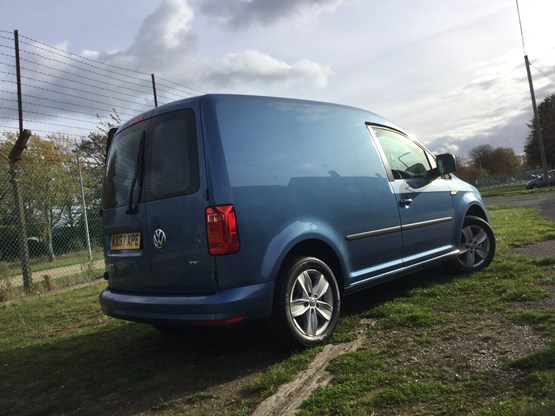
Trevor Gehlcken finds that his admiration for the 'plucky' VW Crafter just grows and grows in his latest long term review.
As commercial vehicle journalists, we spend quite a bit of time talking those at the sharp end of the business – i.e. the drivers.
One thing we have discovered is that quite often, what the drivers want and need and what they are actually given by their fleet managers are two different things.
This can have quite an impact on the bottom line, especially as one of the things we have learned is that, quite often, the vehicles provided are bigger than they really need to be.
In fact, the experts reckon that about 30% of fleets are using the wrong sized vans – either too big, or too small.
So, while quite a few drivers are given, say, a medium panel van, a lot of them could just as well use something the size of the Volkswagen Caddy, the van on test here, which, of course, could be cheaper to both buy and run.
I say this with some experience as I have been testing vans since the early 1990s and know that most tradespeople can cram all the gear they need into a van of this size with a bit of pushing and shoving.
Even if the odd bigger loads need to be carried sometimes, it would still be cheaper for a fleet to run the smaller vans and spot hire something bigger on those few occasions.
And it’s not just a question of carrying loads. The smaller vans are easier to drive, simpler to park and can winkle their way into those tiny multi-storey car park spaces.
True, most medium panel vans can get into these car parks height-wise, but you just try parking one in those ridiculously cramped bays.
Regular readers will know that a large amount of my time is spent moving stuff from one house to another among my extended family and phone conversations regularly begin with: “Dad, you’ve got a van haven’t you...?” or such like. I know full well what’s coming next!
My daughter is the present focus of attention – don’t ask me for the details but it all involves multiple fully-laden long distance journeys for yours truly – and I did wonder if the Caddy was actually going to be of any use lugging things like freezers, washing machines and settees around.
In the event, we have yet to find a load that won’t go into this doughty little van after a bit of shoving and head scratching and as the miles pile on, my admiration for the plucky VW just grows and grows.
This is the fourth long term test we’ve written about the Caddy so far and, as yet, we haven’t really mentioned the business end in detail, so let’s look at what’s on offer.
There’s a full bulkhead for starters – pretty much standard nowadays –but the floor is the plastic non-slip variety, which is usually a paid-for extra.
This item is a Godsend when transporting small bits of cargo as it saves them sliding all over the place between points A and B.
Then there’s half-height protective panelling to stop heavy loads causing reverse ‘dings’, the curse of any van fleet.
Once you get one, they are nigh on impossible to eliminate cost-effectively and could knock hundreds of pounds off the value of the van when you come to sell it.
Meanwhile, there are eight load-lashing eyes to keep things in order.
The only complaint is that our rear doors feature see-through glazing.
We’d recommend the metal type instead as it stops would-be thieves nosing in and seeing what you are transporting.
December 2017
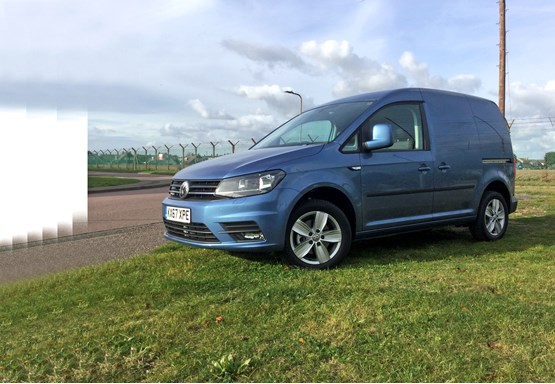
The Caddy's many small features as standard give our top-spec model the ‘wow’ factor in it's recent company fleet review.
One of the reasons we run long-term test vehicles is that, quite often, we get a completely different handle on a vehicle than we would by just testing it for a week.
Living with a van day in, day out over a period of six months and covering thousands of miles can lead to either gold stars or brickbats.
With our Volkswagen Caddy, the gold stars come thick and fast and, even after a couple of months behind the wheel, I am still discovering little goodies I hadn’t noticed before.
These smaller items in themselves aren’t exactly what you would call earth-shattering, but, added together, they really give the Caddy a ‘wow’ factor that most other vans of its size don’t have.
Admittedly, our test vehicle is the top-spec Highline variant and lesser models (which some readers might prefer) won’t get all these bits and bobs. But for the price – £17,735 ex-VAT – you certainly get a lot of features included.
We’ve spoken in the past about Volkswagen’s brave move to add the front assist with city emergency braking system to all its vans and the various other ‘big ticket’ items which make this van about as safe as any vehicle on the road.
So let’s look at some of those smaller goodies. For starters there are vanity mirrors to be found under both driver and passenger sun blinds.
Such items are only usually included in vans that are derived from cars. That’s the first thing my partner looks for in a new vehicle, so at least she’s happy from the off.
Her joy was increased further when she discovered that it’s not only the driver’s seat that adjusts for height, the passenger one does, too – also fairly unusual in a van.
On top of all that, we both have heated seats. Not many fleet drivers are going to get those.
A lumbar adjustment on the driver’s seat, meanwhile, is an extra I appreciate as it saves any back twinges on long journeys.
There’s an overhead parcel shelf to store all that detritus van drivers seem to accumulate and a couple of coffee cup holders in the centre console which are essential for confirmed coffo-holics like me.
There’s a USB port on the dash, which means I can charge my iPhone on the move without having to buy a special adaptor that plugs into the cigar lighter.
That’s saved about £20 for starters.
Then, on the safety front, in addition to the airbags all round, the van’s sat-nav unit also offers a ParkPilot facility.
This not only acts in reverse but will flag up any obstructions in the front. This may be commonplace in cars, but it’s still a novelty in the LCV sector.
As a bit of an old technophobe, to be honest I am still trying to work out all the functions of the Caddy’s infotainment/sat-nav/ParkPilot system.
It seems to do just about everything but make the tea.
So is there anything I don’t like about the Caddy? Well, as usual, I have found a couple of gripes, although by rights they should perhaps be described as nit-picks.
The writing on the heater dials is so small I have to put my specs on to see it, which is a pain.
Also I could do with a USB port on top of the dash as, despite the fact that this van has a built-in sat-nav, I still use my own TomTom unit as it has all my details keyed in.
This means the wire trails across the dashboard and into the cigar lighter down below in an untidy manner.
And that’s about it for the moans. I’m really going to miss this plucky little contender when it goes back in April – I wonder if they will let me keep it a bit longer!
November 2017
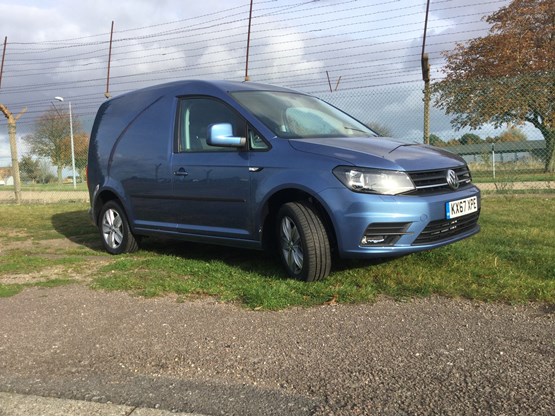
Volkswagen Caddy's array of equipment that comes as standard should answer the critics who say ‘VW vans are expensive’.
The Caddy TSI is the first petrol van we’ve ever had on long-term test – and it wasn’t long after it arrived at Fleet Towers that we began holding it in the highest esteem possible.
Clad in shiny blue metallic paint and with just 142 miles on the clock, we couldn’t imagine a more pleasant place for a driver to spend a working day.
We quite often comment in our various road tests about how smooth the latest diesel engines are, but it’s not until you actually swop for a petrol variant that you realise you’ve been using the word ‘smooth’ in the wrong context.
This van is so whisper quiet that on a couple of occasions I thought the engine had stalled.
And talk about standard specification! In my 25 years of testing commercial vehicles, things have moved on at a staggering rate and the Caddy boasts a spec sheet that would previously been unheard of.
We take our hats off to Volkswagen for making its ‘Front Assist With City Emergency Braking’ system standard on all its vans.
This system brakes the van to a standstill in the event of an anticipated crash up to 30mph. We’ve tested in on the track in the past and it really is a major step forward in the safety stakes.
But the Caddy doesn’t rest there.
It also has an automatic post-collision braking system, brake assist, anti-lock braking system, automatic hazard light activation under emergency braking, driver and passenger front and curtain airbags, electric seatbelt tensioners, electronic brakeforce distribution, electronic dfferential lock, electronic stabilisation programme and engine drag torque control. Phew!
Next time sometime tells me Volkswagen vans are rather expensive to buy, I’ll reel off that list to explain the value.
In the cab, the standard goodies continue.
Unlike most of the rivals, which charge anything up to a thousand pounds for a built-in sat-nav, this Caddy has one as standard, along with a USB port, Bluetooth connectivity, MP3-compatible CD drive, climatic air-con and cruise control.
And that’s just picking out the best items. If we ran a total list of the standard spec, it would leave little room for other comment.
This particular Caddy was put together especially for Commercial Fleet so the VW PR office added a few extras.
That snazzy paint job, together with extra quality black upholstery, adds £492; a winter pack, including headlight washers, heated washer jets, washer fluid level indicator, heated driver and passenger seats and electric auxiliary air heater, adds £582; and a rubber load compartment floor completes the extras at £120.
Unless you happen to be travelling in the wilds of Scotland in the snow, we probably wouldn’t bother with the winter pack, but the load floor is an essential item to stop small bits of cargo slipping and sliding about when on the move.
It will also protect the floor from scratches and scrapes, which will add to the van’s value at selling time.
And, talking of the cargo area, the full height bulkhead is a no-cost option and there are six load-lashing eyes to tie cargo down.
Of course on top of all this wonderful technology, the Caddy also offers that superior build quality that many other manufacturers strive to emulate but rarely do.
It’s typical of what we expect from makers of German products and has helped Volkswagen to secure the treasured No 2 slot in the UK van sales chart which had traditionally belonged to Vauxhall.
October 2017

Volkswagen's petrol newcomer Caddy is welcomed as ‘demonised’ diesel looks set to lose ground in battle of the powerplants.
The pendulum of public opinion is known to swing back and forth on a regular basis.
Take eggs, for example, in my lifetime they have been deemed alternately good for you and bad for you several times over (remember the Edwina Currie egg scandal of 1988?)
But surely nowhere does that fickle pendulum swing more fiercely than in the field of vehicle emissions.
At one time petrol was demonised against LPG, then we had a supposed saviour in diesel and now we’re back to petrol as the favourite again, along with hybrids and electric vans.
And that’s not even mentioning the hydrogen fuel-cell.
If the Government gets its way, we’ll all be driving electric vans by 2040, but in the intervening 27 years, what is the environmentally-aware van fleet manager supposed to do to satisfy both his or her finance bosses and the green sensibilities of the general public at the same time?
Electric vans at present are pretty much a no-no if they need to travel more than about 80 miles in a day, so will petrol be the fuel of choice for longer trips?
If you think that, then try finding a petrol van to buy and you’ll be pretty short of choices. There are none at all on offer at 3.5 tonnes – and precious few under that.
Which brings us round to our latest long-term test van, the Volkswagen Caddy petrol.
All van manufacturers have been rather caught on the hop by this new love affair with petrol, triggered by air quality concerns in urban areas, and it’s hats off to Volkswagen for trying to fill this ‘void’ as soon as possible by offering not only the Caddy in petrol format but now the Transporter, too.
Our test van is the top-spec Caddy Highline variant, sporting a 1.4-litre petrol powerplant offering 125PS and 220Nm of torque at between 1,500-3,500rpm, which should give this van plenty of oomph on the road.
Official fuel consumption figure on the combined cycle is 48.7mpg and basic price is £17,735 ex-VAT.
Ignoring the environmental credentials for a moment and looking purely in financial terms, it is reckoned that anything less than about 20,000 miles and the petrol model wins out against the diesel equivalent, owing to its cheaper front-end price and the lower cost of petrol against diesel.
After that, the diesel Caddy begins to win the day, increasingly so as the miles clock up.
So our long-termer is only going to be the choice for any fleet that undertakes low mileage round-town trips, unless the company that buys it regards environmental matters as more important than financial ones.
But what we don’t know at present is what is going to happen to the residual values (RVs) of diesel vans in the future.
So, in three years’ time, this model may well make a lot more at selling time than is envisaged at present, which, of course, will skew the wholelife cost equation in its favour.
What a conundrum our readers face when choosing new vehicles!
Needless to say, we hold the Caddy in the highest esteem, having tested many of them over the years, and I’m looking forward to the next six months as this van will be my sole means of transport.
Unlike most other vehicle testers, I don’t actually possess a car of my own (although I do confess to having a treasured Harley Davidson in the garage), so the Caddy will be my companion through the worst of the coming winter weather.
Specs
| Manufacturer | Volkswagen |
| Model | Caddy Light Commercial |
| Specification | Caddy C20 N1 1.4TSI BMT 125 SS €6 Highline Van 6Spd 18MY |
| Model Year | 0.00 |
| Annual VED (Road tax) | £0 |
| BIK List Price | £19,325 |
| CO2 | 133g/km |
| Insurance Group | N/A |
| CC | N/A |
| Fuel Type | |
| Vehicle Type | Small van |
| Luggage capacity (Seats up) | 2litres |
Running Costs
| P11D | £19,325 |
| Insurance group | N/A |
| Fuel Type | |
| Cost per mile | 40.72ppm |
| Fuel | 10.88ppm |
| Depreciation | 27.44ppm |
| Service maintenance and repair | 2.40ppm |
Rivals
Info at a glance
-
P11D Price
£19,325
-
MPG
48.7 -
CO2 Emissions
133g/km -
Payload
645kg -
Load Volume
3,200mm -
Load Width
1,556mm -
Load Length
1,779mm



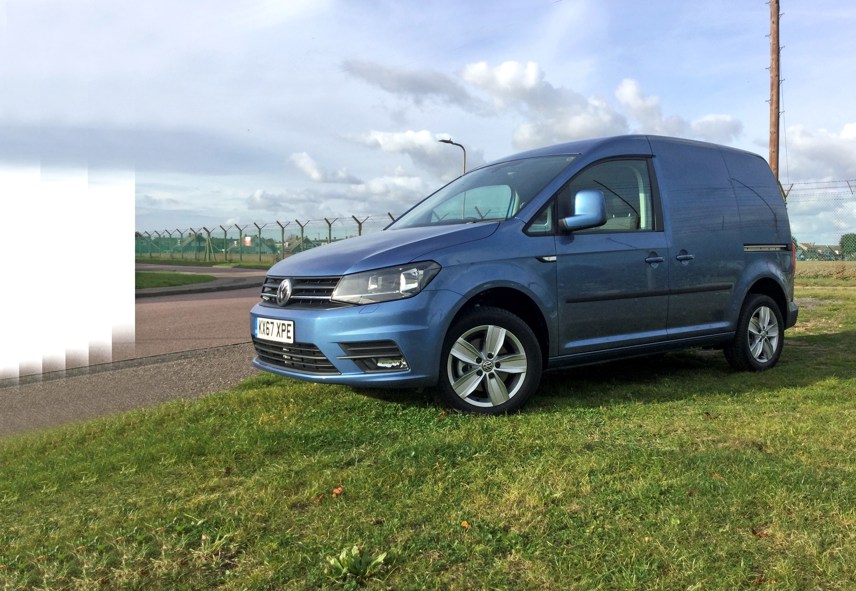
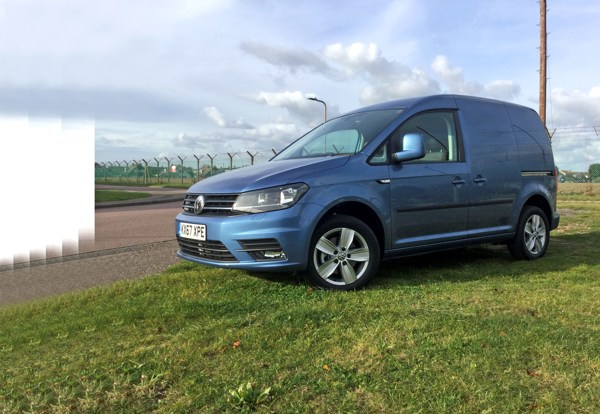
 Diesel
Diesel
 Petrol
Petrol













